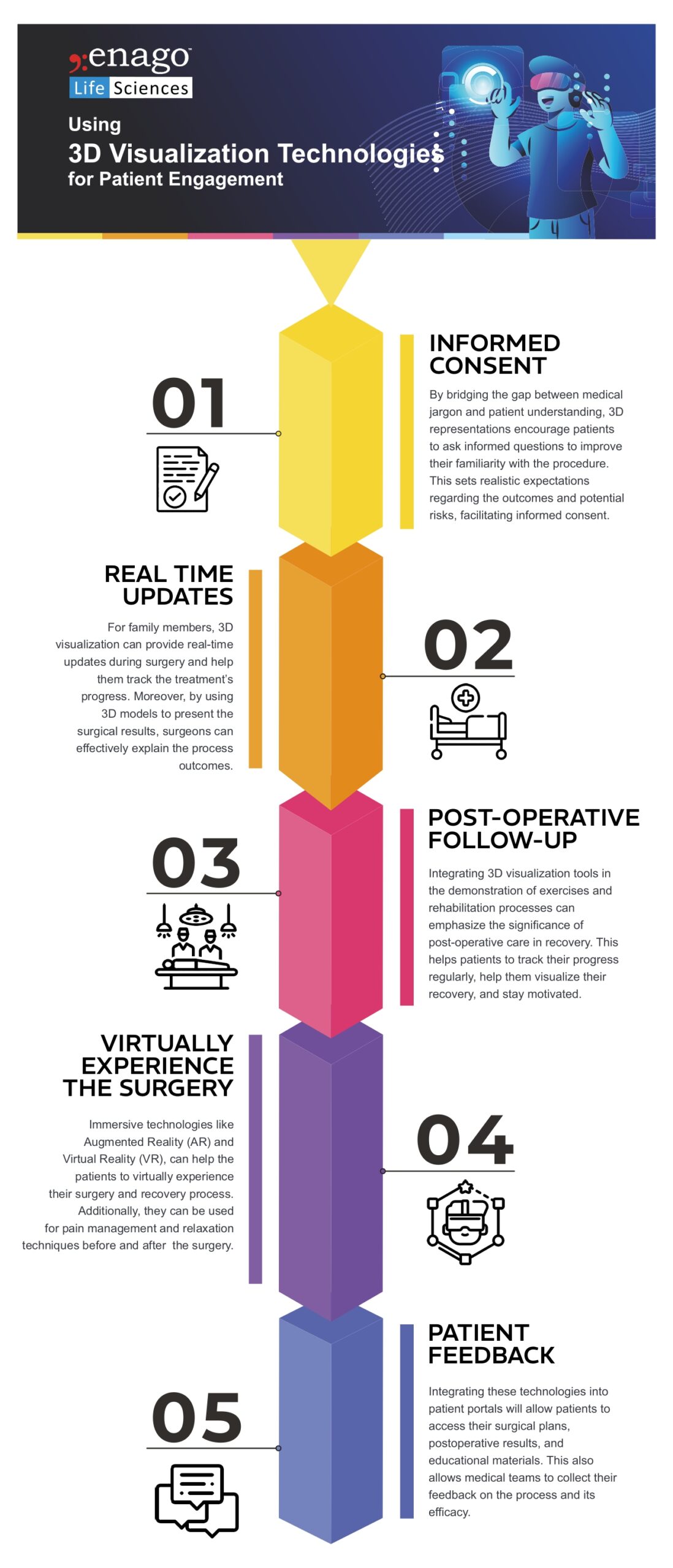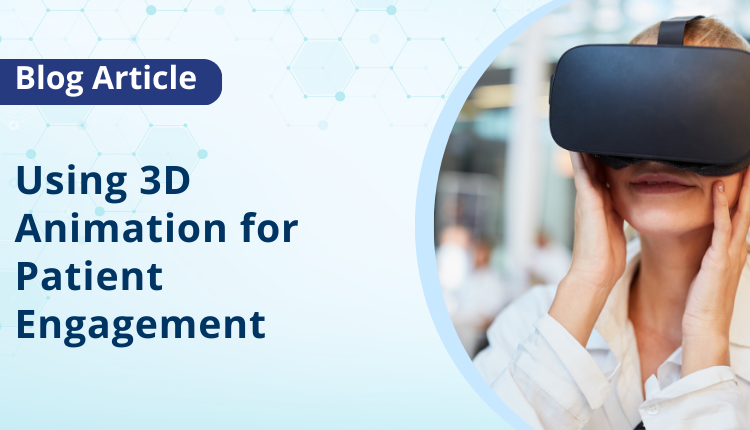Have you ever been in a situation where your patient is confused by complex medical procedures and you’re unsure how to simplify it further? The growing developments in medical technology and techniques demands clarity in patient engagement. Undoubtedly, technological innovations have revolutionized patient communication and the understanding of surgical procedures. Among these, 3D animation has emerged as a powerful tool for both patients and medical practitioners alike. The detailed visual representations of intricate surgical processes bridge the gap between medical jargon and its understanding.
Using 3D Animation in Complex Surgical Procedures
3D animation in surgical procedures refers to the creation of computer-generated, three-dimensional visual representations of surgical or medical processes. These animations provide a detailed, step-by-step depiction of the various stages of surgical intervention. Furthermore, 3D imaging techniques like 3D printing, augmented reality (AR), and virtual reality (VR) can convert 2D radiological images into 3D models. As a result, this approach can enhance disease understanding and surgical planning.
Here are some applications of 3D animation technologies in surgical procedures:
1. Enhance Patient Understanding:
Through vivid illustrations of the anatomical structures, surgical techniques, and overall procedures, 3D animations can aid patients in easily comprehending the procedures.
2. Improve Engagement:
3D animations can alleviate patient stress by improving clarity and engagement. This fosters informed decision-making and collaboration.
3. Create Customized Surgical Guides:
3D printing technologies can help create customized surgical guides, implants, and prosthetics tailored to the requirement of each patient.
4. Visualize Imaging Data:
Holographic visualization of diagnostic imaging data can aid in intraoperative decision-making. This allows precise needle placement during procedures, thereby increasing surgical accuracy.
5. Plan Surgeries:
Medical teams can thoroughly plan and rehearse complex procedures. Furthermore, detailed depiction of surgical techniques minimizes the risk of procedural errors.
6. Provide Education and Training:
3D animation improves the familiarity of medical students, residents, and surgeons by allowing them to virtually observe surgeries from different angles.
Through procedural visualization, patients can comprehend the steps easily. Furthermore, it helps in the disclosure of potential risks and expected outcomes, which empowers them to make informed decisions. For medical professionals, 3D animations simplify the explanation of complex procedures to patients. This fosters better communication and builds trust.
However, creating anatomically precise 3D models requires meticulous planning, specialized software, and skilled operators. Additionally, interdisciplinary collaboration and knowledge sharing is crucial to maximize the benefits of 3D technologies in medical procedures.
Using 3D Visualization Technologies for Patient Engagement
3D visualization promotes a collaborative approach and increases patient trust and confidence in the surgical team. By allowing patients to see simulations or walkthroughs of the surgery, medical practitioners can reduce anxiety and make patients feel more prepared.
Apart from their role in pre-surgical and surgical procedures, here’s how these technologies can improve patient engagement.

Integrating these technologies into patient portals will allow patients to access their surgical plans, postoperative results, and educational materials. This also allows medical teams to collect their feedback on the process and its efficacy.
As these technologies continue to evolve and become more widely adopted, they will undoubtedly play an irreplaceable role in the future of medical care. By embracing the power of visualization technologies, healthcare providers can revolutionize medical communication and execution. This ultimately leads to improved patient outcomes and a more collaborative and informed healthcare experience.
References:
1. Edna Astbury-Ward, PhD. “Radiology’s Visualization Tools Can Transform Surgical Practice.” AuntMinnieEurope, June 7, 2024. https://www.auntminnieeurope.com/imaging-informatics/advanced-visualization/article/15677022/radiologys-visualization-tools-can-transform-surgical-practice.
2. Wierzbicki, Ryszard, Maria Pawłowicz, Józefa Job, Robert Balawender, Wojciech Kostarczyk, Maciej Stanuch, Krzysztof Janc, and Andrzej Skalski. “3D Mixed-Reality Visualization of Medical Imaging Data as a Supporting Tool for Innovative, Minimally Invasive Surgery for Gastrointestinal Tumors and Systemic Treatment as a New Path in Personalized Treatment of Advanced Cancer Diseases.” Journal of Cancer Research and Clinical Oncology 148, no. 1 (June 10, 2021): 237–43. https://doi.org/10.1007/s00432-021-03680-w.
Author:

Anagha Nair
Editorial Assistant, Enago Academy
Medical Writer, Enago Life Sciences
Connect with Anagha on LinkedIn

